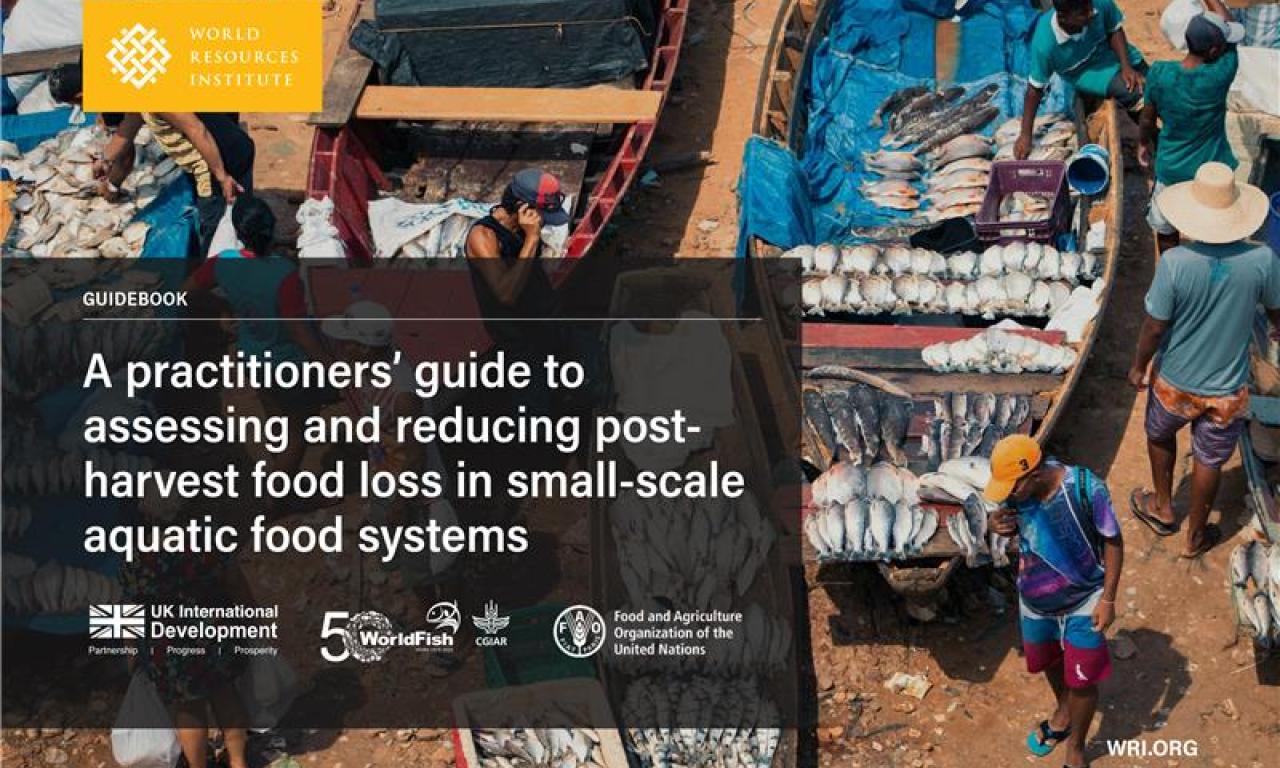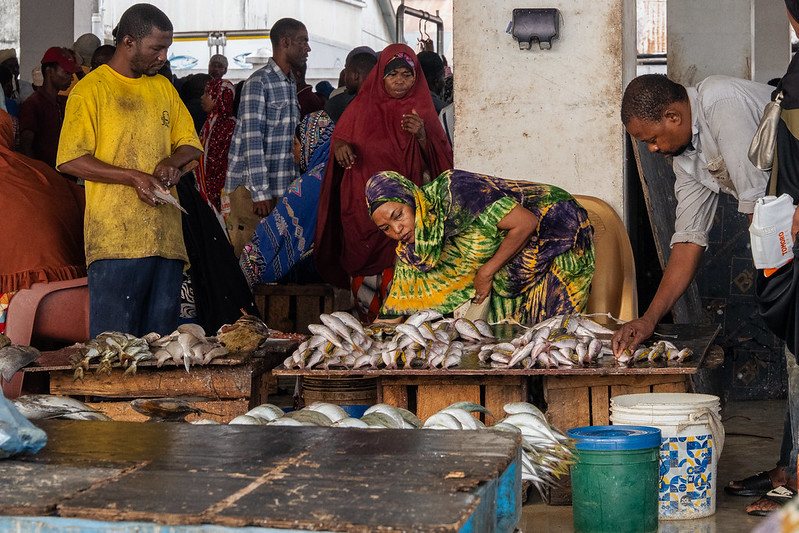
The small-scale fisheries and aquaculture sectors are cornerstones of food security and economic stability in many regions. These industries provide essential nutrition and income to millions, particularly in developing countries. Despite their significance, small-scale aquatic food systems often face a range of challenges, including inadequate infrastructure, limited market access, and vulnerability to environmental changes. Addressing these issues is critical to ensuring the sustainability and resilience of these systems, which are vital for both local communities and global food supply chains.
Understanding Post-Harvest Aquatic Food Loss: The Silent Crisis
Post-harvest food loss refers to reductions in the quantity, quality, or value of aquatic foods after harvest but before reaching consumers. In Small-Scale Fisheries and Aquaculture (SSFA), these losses often occur due to practical challenges, such as inadequate handling and storage, weak infrastructure, disease outbreaks and extreme weather, as well as social factors like limited market access and systemic inequalities. Fish may spoil during transport, be downgraded due to poor handling, sold cheaply because of gender bias, or discarded entirely. Globally, between 15 to 35% of aquatic food is lost each year.
For small-scale actors, these losses are more than statistics. They translate into reduced income, limited access to nutritious food, and wasted resources. The scale of the problem is significant: millions of tons of food are lost annually; food that could have nourished communities and supported livelihoods. This loss also contributes to environmental harm, as the wasted food accounts for substantial natural resources, emissions, and habitat disruption that went into producing it.
Women have a fundamental role in SSFA value chains, often in post-harvest processing and trade, are are particularly affected by these losses. They often face barriers in decision-making and have limited control over pricing and selling practices, which makes it even harder to effectively address food loss. Addressing these issues requires more than just tackling the waste; it means improving infrastructure, addressing social inequalities, and increasing awareness at every stage of the value chain. By reducing post-harvest loss, we can not only preserve valuable resources but also create a more resilient food system that supports small-scale fisheries, improves nutrition, and enhances overall food security.
Abigail Frankfort is the Aquatic Food Lead at the World Resources Institute, and the lead author of new guidance on addressing post-harvest loss in SSFA.
"Understanding the complexities of small-scale fisheries requires more than just technical tools; it requires a deep understanding of the social dynamics at play. The most effective solutions will come from truly engaging with communities, listening to their experiences, and ensuring that interventions are owned by those who are most impacted."
The Practitioner’s Guide: Turning Knowledge into Action
The practitioner’s guide to assessing and reducing post-harvest food loss in small-scale aquatic food systems was developed to provide a flexible roadmap for more effective, meaningful and collaborative efforts to address this issue. Practitioners had long lacked consolidated resources, planning tools, and guidance for effectively understanding the context in which loss occurs, and co-developing strategies to address it. Between October 2024 and April 2025, the guide was shaped through interviews, surveys, and discussions with practitioners, ensuring it reflects both global expertise and real-world experiences.
At its core is a flexible six-stage framework—Prepare, Train, Explore, Quantify, Validate, and Act—adaptable to different geographies, socio-economic contexts, and project goals. Combining quantitative and qualitative methods, value chain mapping, and gender-responsive approaches, the guide equips practitioners with tools to design effective, evidence-based, and locally owned interventions.

The guidebook is authored by Abigail Frankfort and Jonathan Baines from World Resources Institute, Christopher Giordano from WholeFish Strategies, Omar Peñarubia and Ansen Ward from FAO, and Aditya Parmar from WorldFish, with contributions from Blue Ventures and Oceana experts. And it was first presented and discussed publicly at an FAO side event at the United Nations Ocean Conference (UNOC) on measurement and solutions for food loss and waste in aquatic value chains.
During the UNOC event, Ansen Ward stated,
“To tackle the challenge of post-harvest loss in small-scale fisheries, we must take a multidimensional approach. This means addressing not only technical aspects, such as improving handling, storage and transportation, but also policy issues, regulatory frameworks, and the capacity-building needed to support sustainable solutions. It's about creating a holistic environment where technology, markets and social dynamics mesh to create long-term and more effective loss reduction interventions."
Designed for a wide range of stakeholders, from researchers and students to NGOs, fisheries agencies, policymakers, and small-scale producers, it provides practical insights to strengthen assessment practices, improve incomes, and enhance food security. By applying the guide, projects can identify where and why losses occur, collaborate with communities to co-develop solutions, and introduce innovations in handling, storage, and market access.
AABS: Advancing Its Vision for Resilient Aquatic Food Systems
The guidebook was developed within the scope of Asia–Africa BlueTech Superhighway (AABS) project, implemented by WorldFish and funded by the UK’s International Development department through the Blue Planet Fund. This initiative plays a key role in connecting experts and practitioners across Asia and Africa, fostering cross-regional collaboration. AABS has been instrumental in advancing its vision for resilient and sustainable aquatic food systems by facilitating cross-regional collaboration, sharing innovative solutions, and ensuring the guide reflects diverse perspectives and real-world challenges.
“Reliable loss data in small-scale aquatic food systems has always been elusive. With the new Practitioner’s Guide, we’re equipping the field with practical, scalable tools that go beyond diagnostics—focusing on co-designed solutions that are gender-responsive, grounded in local realities, and adaptable across regions.”
— Dr. Aditya Parmar, WorldFish
AABS focuses on fostering cross-regional collaboration to tackle post-harvest loss and strengthen value chains in small-scale fisheries. By providing innovative solutions, AABS ensures that strategies are adapted to fit the unique socio-economic and geographical contexts of each region.

Conclusion
Post-harvest losses in small-scale fisheries are more than quantities; they represent real challenges for livelihoods, nutrition, and resource sustainability. The practitioner’s guide provides actionable tools and frameworks to tackle these losses effectively. Through collaboration, innovation, and community engagement, small-scale aquatic food systems can become more resilient, equitable, and sustainable. Addressing post-harvest loss is essential, not only to feed billions and support livelihoods, but to safeguard the future of our aquatic food systems and the people who depend on them.
Cover photo: Two baskets filled with freshly caught Indian Salmon fish being carried to a fish market in Cox’s Bazar, Bangladesh, where they will be sold for local and international distribution. Photo by Philipo Ngonyani.
